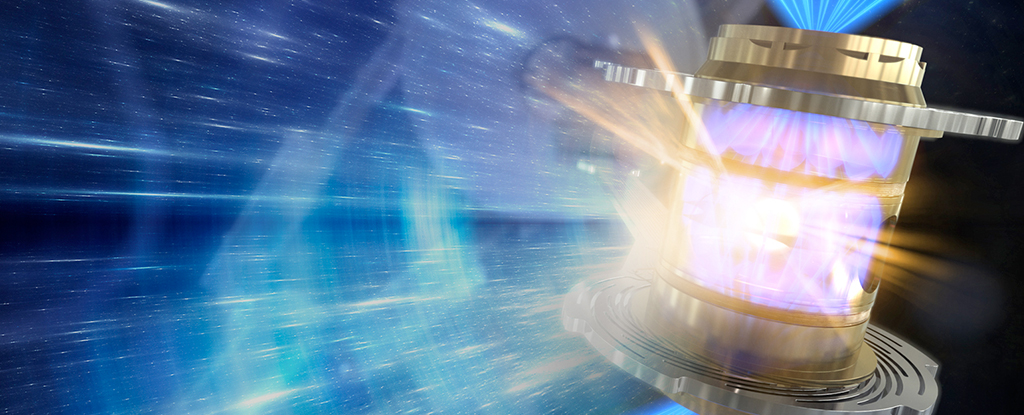Products You May Like
Scientists have made a “breakthrough” in their quest to harness nuclear fusion.
The US Department of Energy officially announced the milestone in fusion energy research on Tuesday.
For the first time, researchers created a nuclear fusion reaction that produced more energy than they put into it.
The experiment, conducted on December 5 at Lawrence Livermore National Laboratory in California, generated 3.15 megajoules of energy, more than the 2.05 megajoules put into creating it.
“Scientifically, this is the first time that they showed that this is possible,” Gianluca Sarri, a physicist at Queen’s University Belfast, told New Scientist. “From theory, they knew that it should happen, but it was never seen in real life experimentally.”
What is fusion energy and why is it a big deal?
Nuclear fusion works by forcing together two atoms – most often hydrogen – to make a heavier one – like helium.
This explosive process releases massive amounts of energy, the Department of Energy explains. Fusion is the opposite of fission, the reaction that powers nuclear reactors used commercially today.
Fusion occurs naturally in the heart of the Sun and the stars, providing these cosmic objects with fuel.
Since the 1950s, scientists have been trying to replicate it on Earth in order to tap into what nuclear energy advocates suggest is clean, cheap, and almost limitless electricity.
According to the International Atomic Energy Agency, fusion generates four times more energy per kilogram than the fission used to power nuclear plants, and nearly 4 million times more energy than burning oil or coal.
What’s more, unlike fossil fuels, fusion doesn’t release carbon dioxide – the greenhouse gas that’s the main driver of climate change – into the atmosphere. And unlike nuclear fission, fusion doesn’t create long-lived radioactive waste, according to the Department of Energy.
But so far, nuclear fusion hasn’t solved our energy problems on a grand scale.
What Tuesday’s ‘breakthrough’ announcement means for the future
Tuesday’s announcement is a huge step forward in nuclear fusion energy, but applying the technology at commercial scale is likely still years away.
Chanda Prescod-Weinstein, a theoretical physicist, pointed out that the process the Department of Energy uses requires tritium, a rare and radioactive isotope of hydrogen.
“It may yet yield important information that is ultimately transformative. We don’t know yet,” Prescod-Weinstein tweeted on Monday. “Being able to do this once a day with a laser does not at all mean that this mechanism will scale!”
Investors, including Amazon founder Jeff Bezos, have poured billions into clean energy startups trying to make fusion commercially viable, and Tuesday’s announcement is likely to continue that trend.
This article was originally published by Business Insider.
More from Business Insider:
